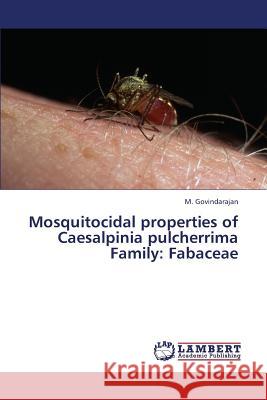Mosquitocidal properties of Caesalpinia pulcherrima Family: Fabaceae » książka
Mosquitocidal properties of Caesalpinia pulcherrima Family: Fabaceae
ISBN-13: 9783659360398 / Angielski / Miękka / 2013 / 72 str.
Mosquitoes are blood-feeding insects and serve as the most important vectors for spreading human diseases, such as malaria, yellow fever, dengue fever, and filariasis Control of such diseases is becoming increasingly difficult because of increasing resistance of mosquitoes to pesticides. An alternative approach for mosquito control is the use of natural products of plant origin. Humans have used plant parts, products and metabolites in vector control since early historical times. Plants are the chemical factories of nature, producing many chemicals, some of which have medicinal and insecticidal properties. The aim of this book is to give a self-contained detail of mosquito control from Caesalpinia pulcherrima. It is designed as a book for those research scholars who use mosquito control and for researchers working on medicinal plants. This book contains 7 chapters. Chapter 1 provides a general introduction. In chapter 2, reviews of literature are given. The chapter 3 provides the aim of the present study. The chapter 4 provides the materials and methods. The observations are presented in chapter 5. The discussion is in chapter 6. Summary is in chapter 7.Finally provide references.
Mosquitoes are blood-feeding insects and serve as the most important vectors for spreading human diseases, such as malaria, yellow fever, dengue fever, and filariasis Control of such diseases is becoming increasingly difficult because of increasing resistance of mosquitoes to pesticides. An alternative approach for mosquito control is the use of natural products of plant origin. Humans have used plant parts, products and metabolites in vector control since early historical times. Plants are the chemical factories of nature, producing many chemicals, some of which have medicinal and insecticidal properties. The aim of this book is to give a self-contained detail of mosquito control from Caesalpinia pulcherrima. It is designed as a book for those research scholars who use mosquito control and for researchers working on medicinal plants. This book contains 7 chapters. Chapter 1 provides a general introduction. In chapter 2, reviews of literature are given. The chapter 3 provides the aim of the present study. The chapter 4 provides the materials and methods. The observations are presented in chapter 5. The discussion is in chapter 6. Summary is in chapter 7.Finally provide references.











